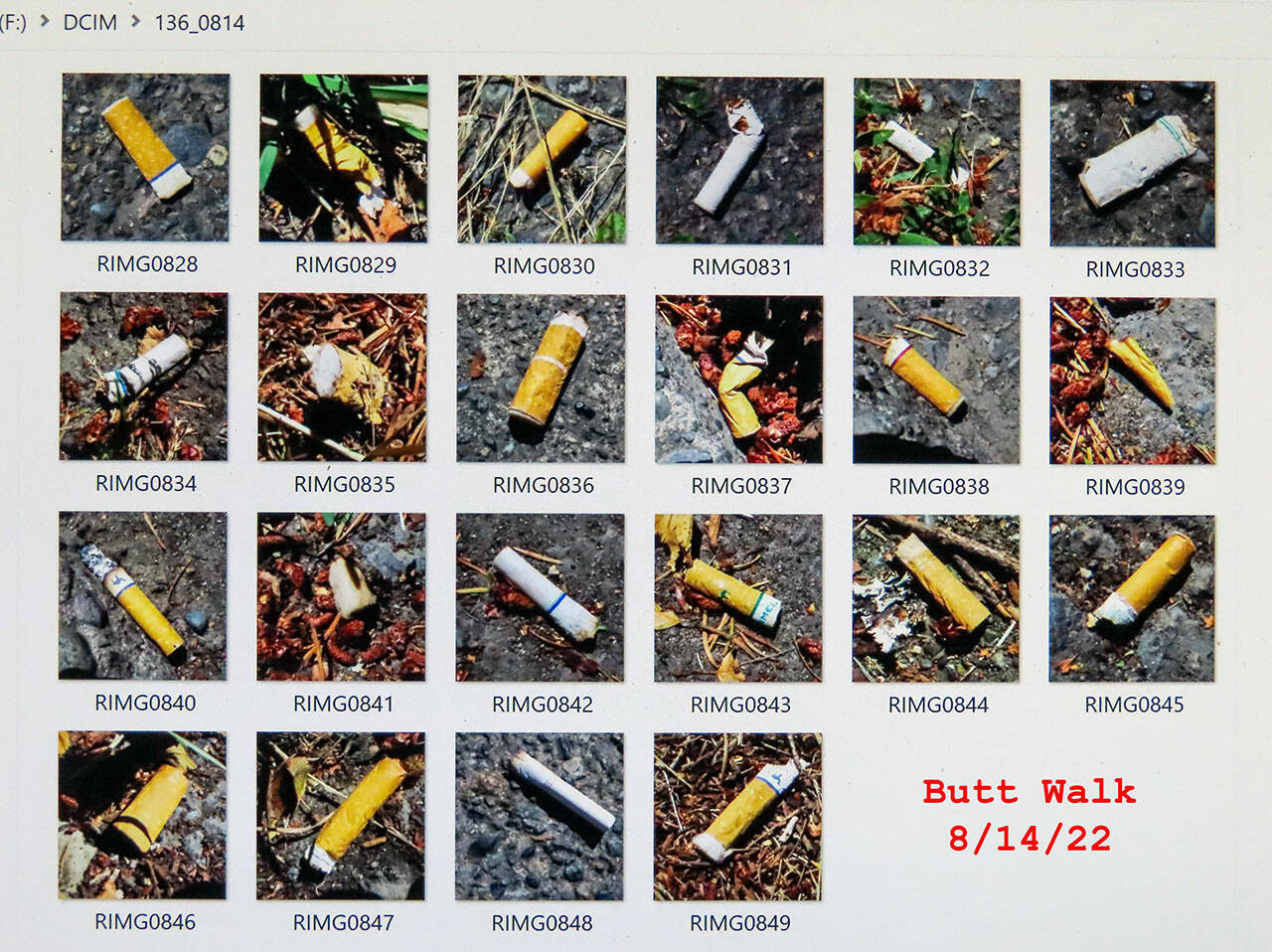I woke up on Sept. 9 to a Red Flag Warning in my email box from the Island Emergency Alert Team.
The enclosed message spoke of heightened fire danger in Western Washington because of low humidity, high winds and overall dry conditions. This missive also spoke of precautions one should take to avoid a firestorm disaster that included prohibitions on the burning of trash, firepits, campfires and other recreational incendiary activities.
This is all good advice.
These conditions have been a recurring nightmare of late. Without even getting up from my writing chair to observe the surrounding desiccation of the plant life, I need only look up to see the orange/yellow morning light on the window screens to know that the smoke from wildfires, somewhere else, is indicating a shift in wind that brings the smoke that turns the sun from shining white to the appearance of a dulled, red rubber ball.
It is still the time of year that makes me extremely worried about the potential of wildfires on the island, and the orange light and the red flag warnings don’t assuage my concerns.
To compound that worry, I started walking island roads this past February to help stave off the effects of creeping, old-fartism.
While I have run, biked and driven the island, walking provides a different perspective that allows one time to really see what one is passing. But what has concerned me in connection with the dryness of things and the thought of fire is what I found on the roadside on these walks — an abundance of smoking material remnants. Everywhere.
To this end, I have engaged in a weekly exercise that has been dubbed “the Butt Walk” where, with close-up camera, a zip-lock bag and salad tongs in tow, I record and scoop up all traces of smoking materials over the same third of a mile of island highway.
My sweep is always on the east side of the highway between the white fog line and the eastern, grassy edge of the concrete sidewalk. Many times, the discovered butt still has the filter and paper intact, with the burning tobacco having evidently been ejected once the tossed butt hits the tarmac.
This would seem to eliminate the possibility of any combustible ignition along the roadside, although we might not always be so lucky.
I have talked with the Vashon Island Fire & Rescue (VIFR) about this and was told that they have no database that might indicate past fires that had started from a flung butt.
I have contacted King County Roads a couple of times, voicing my concerns, and asking about the possibility of posting signs warning against the wanton wafting of burning materials out on our ribbons of highway. Signs would be nice, but in practice, it would seem to be nearly impossible to enforce any fineable violations in this regard.
On the other hand, when common sense fails, as it has been wont to do lately in ever-expanding regularity, some form of warning should be in order.
As it is, I have picked up anywhere from nine to 30-plus butts in each weekly passing. Over that third of a mile, with an average of 20 some butts in a sweep, this would translate into finding one about every 90 or so feet. I walked from the north end one day, and as a lark, I counted my steps between butts.
Between the north end firehouse and the south end of the Old Highway, I only made it to 100 a couple of times, and otherwise only made it to ten or twenty steps between butts many more times than I can recall.
The climate has changed. It is warmer. It is drier. These are all non-negotiables. There have been any number of warnings about this.
There have also been any number of warnings about the dangers of smoking.
If you wish to continue to dance with the nicotine risk, that is up to you. On the other hand, it is not your right to put the rest of the island at risk because you can’t take responsibility for properly disposing of your burning materials.
I know that cars no longer accommodate smokers with ashtrays. Cars do, however, tend to regularly have cupholders that can easily hold an empty aluminum can — and your butts. Of all the fire restrictions on the red flag warning list, it appears that an advisory against throwing burning things out of your car was not one of them.
One might say that common sense would preclude having to warn against that kind of activity in dry times (or at any time for that matter), but as with many things these days, and especially in this case, one would be severely mistaken
Peter Ray, a writer, photographer and filmmaker, has been wandering Vashon Island for 40 years — most of that time he claims to have not been lost.



